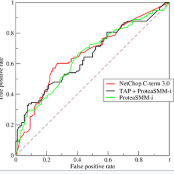Parkinson's Disease is associated with gait movement disorders, such as postural instability, stiffness, and tremors. Today, some approaches implemented learning representations to quantify kinematic patterns during locomotion, supporting clinical procedures such as diagnosis and treatment planning. These approaches assumes a large amount of stratified and labeled data to optimize discriminative representations. Nonetheless, these considerations may restrict the operability of approaches in real scenarios during clinical practice. This work introduces a self-supervised generative representation, under the pretext of video reconstruction and anomaly detection framework. This architecture is trained following a one-class weakly supervised learning to avoid inter-class variance and approach the multiple relationships that represent locomotion. For validation 14 PD patients and 23 control subjects were recorded, and trained with the control population only, achieving an AUC of 86.9%, homoscedasticity level of 80% and shapeness level of 70% in the classification task considering its generalization.
翻译:帕金森氏病与运动运动紊乱有关,例如姿势不稳定、僵硬和震颤。今天,一些方法在运动期间进行了学习表现,以量化运动过程中的运动模式,支持诊断和治疗规划等临床程序。这些方法假设了大量分层和贴标签的数据,以优化歧视表现。然而,这些考虑因素可能会限制临床实践期间实际情况下方法的可操作性。在视频重建和异常检测框架的借口下,这项工作引入了自我监督的基因代表制。这一结构在经过了单级的薄弱监督学习之后进行了培训,以避免阶级间差异,并接近代表流动的多种关系。对于14个PD病人和23个控制对象的鉴定进行了记录,并且仅与控制人群进行了培训,实现了86.9%的AUC,80%的同质性水平和70%的形状水平,以其分类任务为通用。




